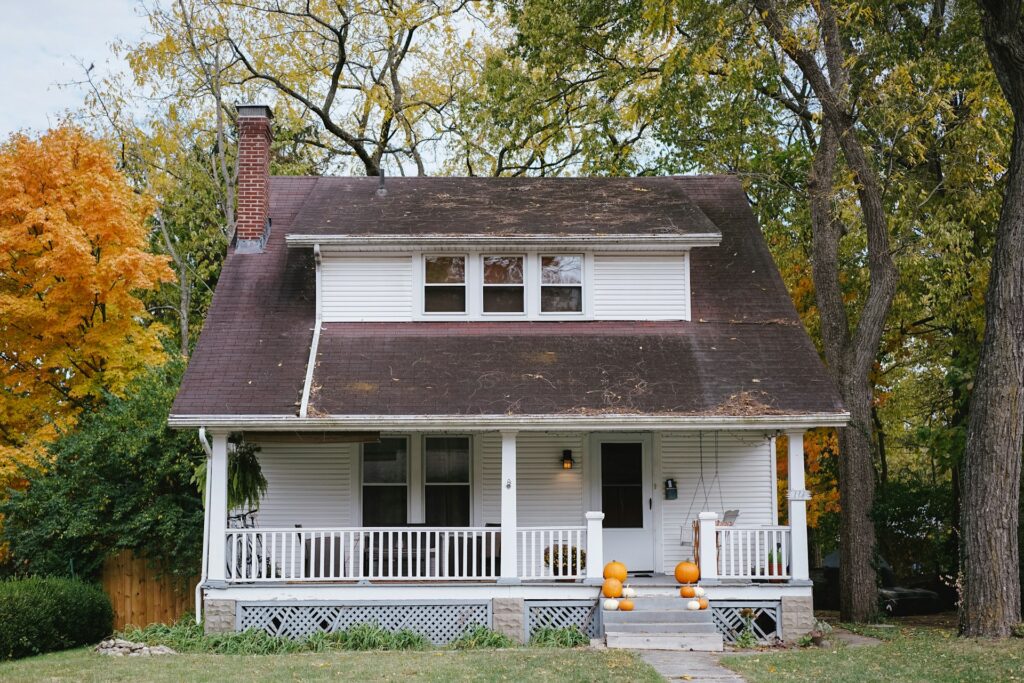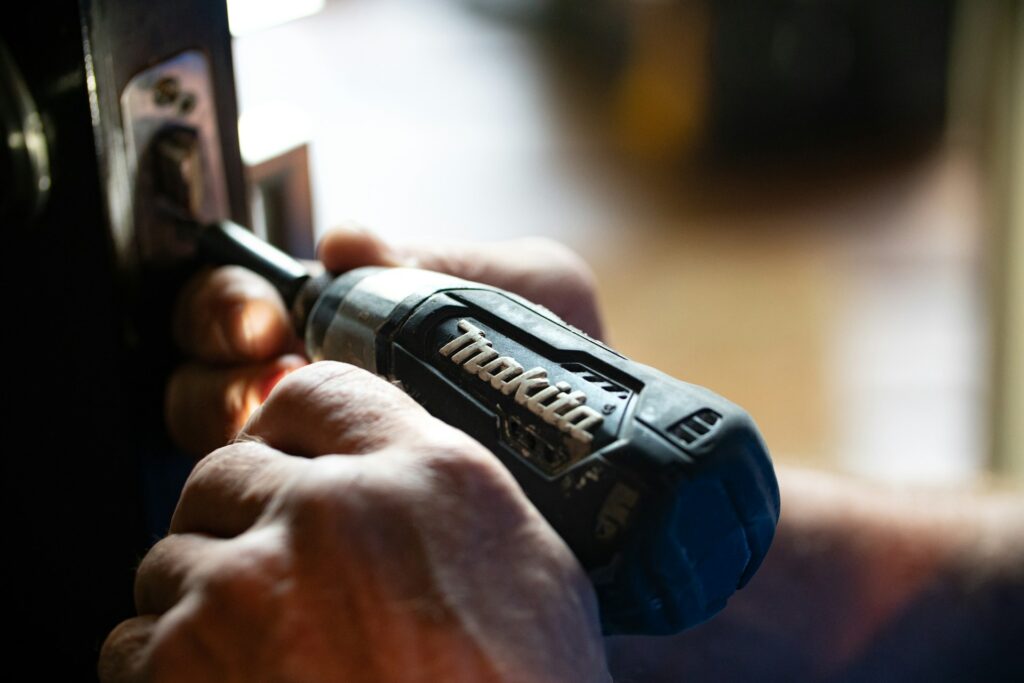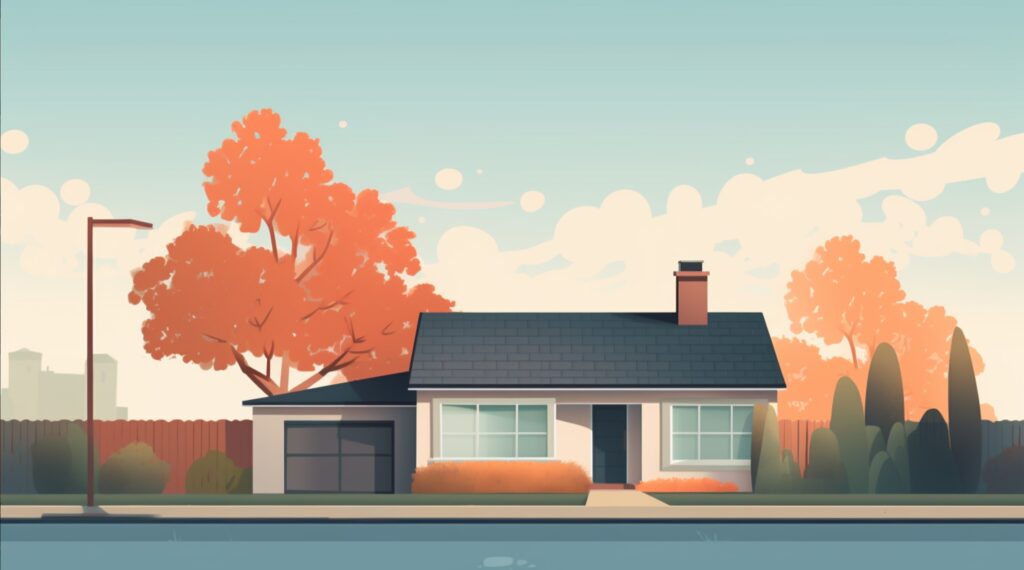
We are reader-supported. When you buy through links on our site, we may earn an affiliate commission.
Whether you own your home outright or have been looking into purchasing one, you should be up to date on the latest homeownership statistics. They’ll give you a good idea of the current housing market — and might help you understand when to buy or sell.
Key Homeownership Statistics
Although many younger adults seemingly struggle to enter the housing market, most people in the United States own homes. In 2023, about 65.7% of those living in the U.S. owned the house they were living in.
Apparently, this high homeownership rate has a caveat — over 12 million households spend more than 50% of their income on housing. There are roughly 125 million households in the country, according to the U.S. Census Bureau, meaning nearly one in 10 Americans use most of their paycheck on their homes.
This might be why first-time buyers accounted for only 26% of homebuyers in 2022, down from 50% in 2010. This figure is the lowest percentage since the National Association of Realtors began tracking the metric in 1981.

It’s not hard to see why they’re struggling to break into the housing market — high demand is increasing prices. In the fourth quarter of 2022, 29.01% of homebuyers paid over asking. While that figure is technically down from 54.85% in the fourth quarter of 2021, it’s still unusually high.
Many people will have to wait until the bubble pops and housing becomes more affordable. After all, over 75% of available residential properties in the U.S. are out of reach for middle-class buyers due to increasing income inequality.
Interestingly enough, those who can afford to buy houses are beginning to favor cash. Homeownership statistics show 29% of house purchases were all-cash transactions in 2023, up 1% from 2022. The increase isn’t drastic, but it is a worthwhile data point.
Homeownership Statistics By State
The U.S. Census Bureau published a free data set on homeowners from 2005 to the present day. As of the first quarter of 2024, the country’s homeownership rate ranges between 39.7% and 79.4% — a significant difference. While it doesn’t provide supplemental information, it seems there is a correlation between each state’s cost of living and its rating.
| State | Homeownership Rate |
|---|---|
| Alabama | 73.9% |
| Alaska | 66.7% |
| Arizona | 70.1% |
| Arkansas | 66.5% |
| California | 55.5% |
| Colorado | 66.6% |
| Connecticut | 70.1% |
| Delaware | 76.2% |
| District of Columbia | 39.7% |
| Florida | 69.7% |
| Georgia | 63.3% |
| Hawaii | 60.8% |
| Idaho | 70.4% |
| Illinois | 66.7% |
| Indiana | 71.6% |
| Iowa | 71.3% |
| Kansas | 67.1% |
| Kentucky | 68.9% |
| Louisiana | 67.4% |
| Maine | 77.2% |
| Maryland | 69.9% |
| Massachusetts | 62.7% |
| Michigan | 71.3% |
| Minnesota | 71.8% |
| Mississippi | 72.8% |
| Missouri | 69.9% |
| Montana | 72.1% |
| Nebraska | 68.7% |
| Nevada | 62.9% |
| New Hampshire | 73.4% |
| New Jersey | 59.9% |
| New Mexico | 70.0% |
| New York | 54.3% |
| North Carolina | 65.3% |
| North Dakota | 62.3% |
| Ohio | 69.6% |
| Oklahoma | 67.7% |
| Oregon | 63.3% |
| Pennsylvania | 71.2% |
| Rhode Island | 61.4% |
| South Carolina | 70.7% |
| South Dakota | 68.1% |
| Tennessee | 70.9% |
| Texas | 62.5% |
| Utah | 69.6% |
| Vermont | 74.9% |
| Virginia | 70.5% |
| Washington | 63.8% |
| West Virginia | 79.4% |
| Wisconsin | 67.4% |
| Wyoming | 74.1% |
Since the coasts have a higher cost of living, fewer homeowners exist there than in the country’s central region. In 2022, the Midwest homeownership rate reached 70% — the highest of all areas. While the South followed closely behind with 67.3%, the Northeast and West trailed with 62.5% and 61.4%, respectively.
The States With the Highest Homeownership
For your convenience, we’ve broken down the U.S. Census Bureau’s data set to make it easier to skim. Since most of the state’s numbers are similar, searching them line by line would be time-consuming. So, which states have the highest homeownership rate?
| State | Homeownership Rate |
|---|---|
| West Virginia | 79.4% |
| Maine | 77.2% |
| Delaware | 76.2% |
| Vermont | 74.9% |
| Wyoming | 74.1% |
| Alabama | 73.9% |
| New Hampshire | 73.4% |
| Mississippi | 72.8% |
| Montana | 72.1% |
| Minnesota | 71.8% |
West Virginia leads the country with an impressive 79.4% — meaning nearly eight in 10 people own a home in this state. Maine follows closely behind with 77.2%. Delaware, Vermont, Wyoming, Alabama, New Hampshire, Mississippi, Montana and Minnesota sit at 76.2%, 74.9%, 74.1%, 73.9%, 73.4%, 72.8%, 72.1% and 71.8%, respectively.
The States With the Lowest Homeownership
Which states have the lowest homeownership rate? According to the U.S. Census Bureau’s homeownership statistics, the District of Columbia is at the bottom with 39.7%. New York, an infamously expensive place to live, is second with 54.3%.
| State | Homeownership Rate |
|---|---|
| District of Columbia | 39.7% |
| New York | 54.3% |
| California | 55.5% |
| New Jersey | 59.9% |
| Hawaii | 60.8% |
| Rhode Island | 61.4% |
| North Dakota | 62.3% |
| Texas | 62.5% |
| Nevada | 62.9% |
| Georgia and Oregon | 63.3% |
California, New Jersey and Hawaii — all with high costs of living — sit at 55.5%, 59.9% and 60.8%, respectively. Rhode Island’s homeownership rate is 61.4% and North Dakota’s is 62.3%. Texas’s 62.5% and Nevada’s 62.9% are so close the difference is almost insignificant. Georgia and Oregon tie for 10th place at 63.3%.
Homeownership Statistics By Age
In 2023, 35 was the average homeownership age of first-time buyers, a slight decrease from 36 in 2022. The average repeat buyer was 58 years old in 2023, down from 59 in 2022. Both groups had a 1-year difference year-over-year.
Generation-wise, Baby Boomers — those aged 59 to 77 years old — still corner the housing market. Homeownership statistics show they made up 39% of homebuyers in 2023, up from 29% in 2022. Their generation owns the most houses.

The same research shows Generation X accounted for 25% of homebuyers in 2023. Their homeownership rate is lower than that of Millennials — those aged 25 to 34 — who went from owning 43% of homes in 2021 to 28% in 2022.
Generation Z only made up 4% of homebuyers in 2023. This fact shouldn’t be surprising, considering some members of this generation are still under 18. Additionally, many younger adults are still working on building wealth amid a cost of living crisis.
Homeownership Statistics By Owner Type
Recently, investors have been buying properties to turn into rentals. According to a senior economist with the National Association of Realtors, 15% of all first-time buyers were shut out of the housing market in 2022. Many potential first-time buyers worry this trend will continue through 2024.
Institutional investors purchased 25% of flipped homes in the third quarter of 2022, up from 22% in the second quarter. When factoring in independent operations and larger private equity firms, the total increases to 44%. This may artificially increase scarcity and drive demand, making home prices skyrocket in the coming years.

People who already own homes have less cause for concern, as they’re not statistically likely to need another home. As of 2021, research shows nearly 50% of people living in the U.S. have lived in their current home for six to 10 years. That said, the trend of investors buying residential properties may complicate the efforts of repeat buyers.
The Reality of Owning a Home in the U.S.
Breaking into the housing market will be challenging for younger generations, underserved groups and middle-income earners if the trends of investor-backed purchases, all-cash transactions and paying over asking continue.










